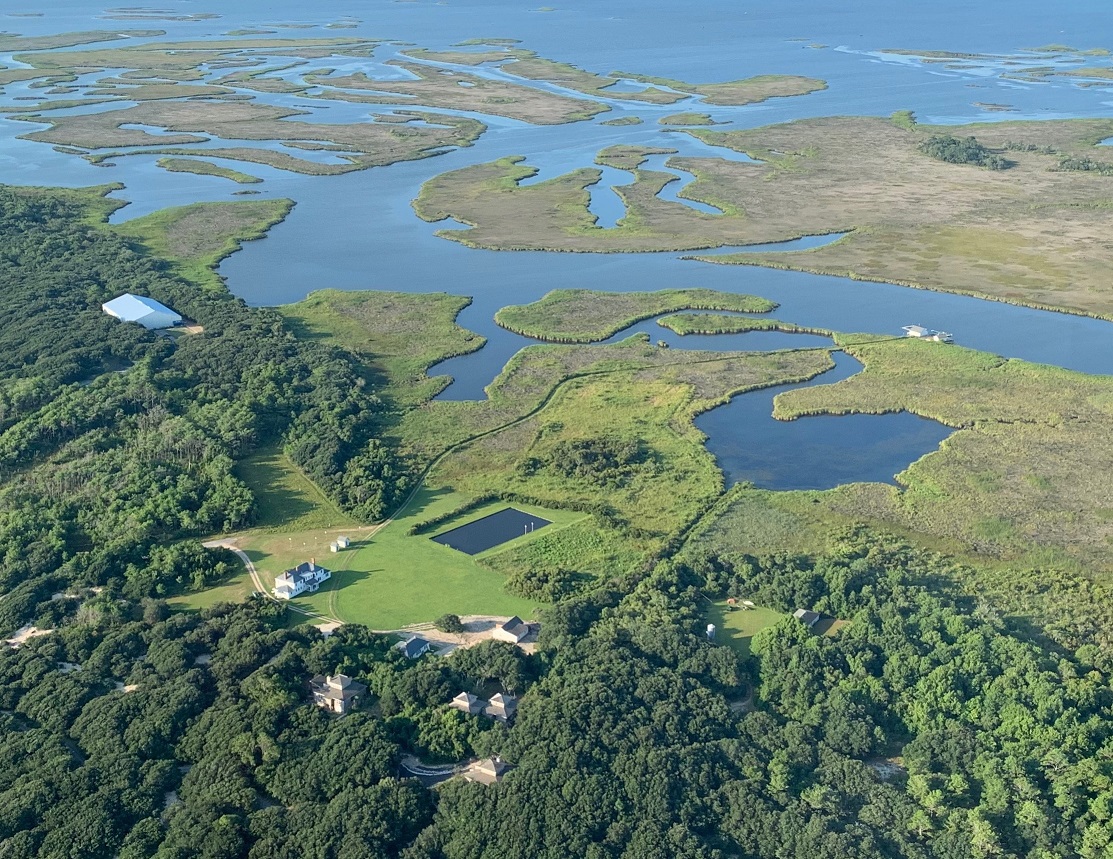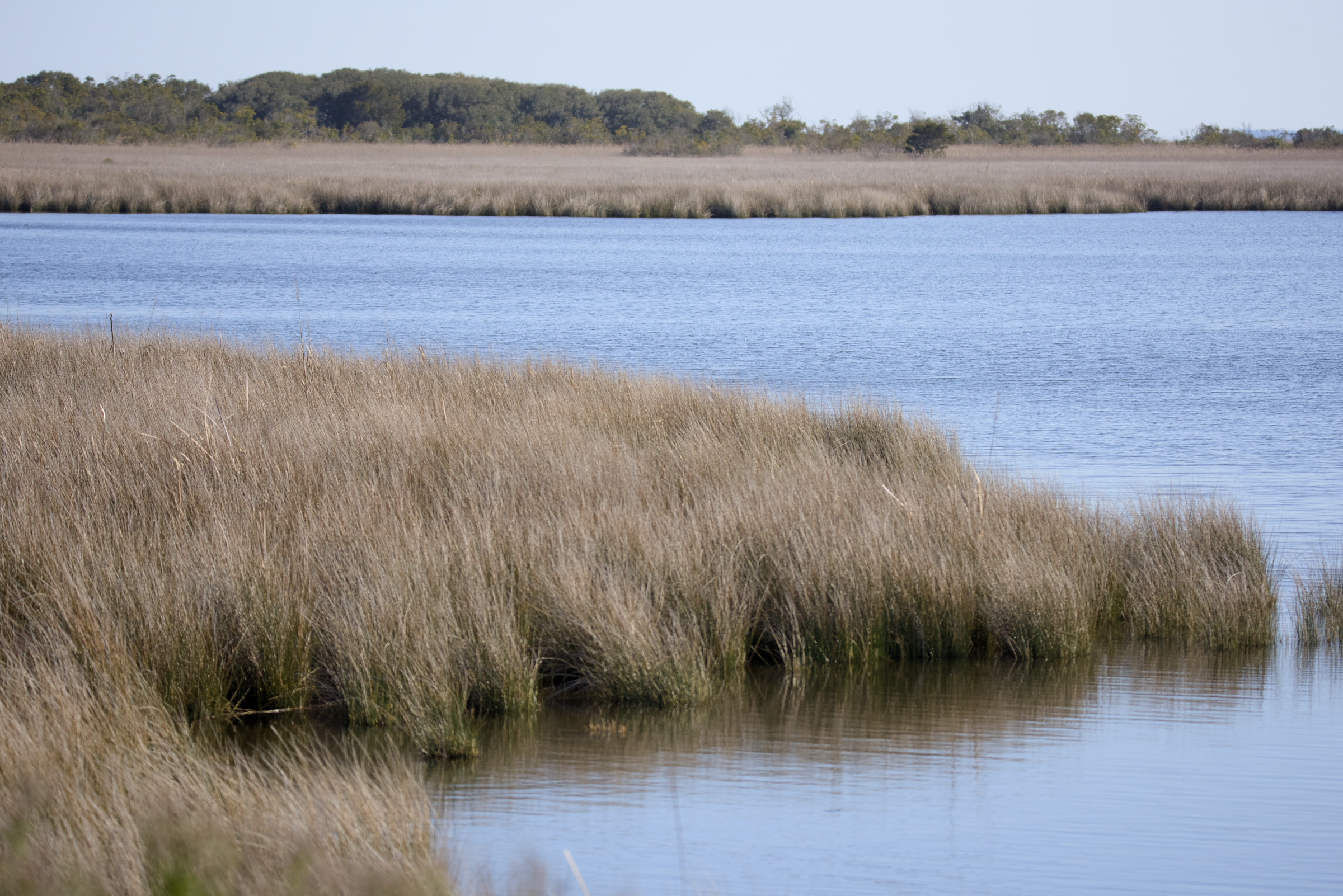Finding Creative Ways to Protect the Marsh
$3 Audubon Grant to Feature Innovative Approaches to Restoration
The Donal C. O’Brien Audubon Center at Pine Island stretches for 2600 acres along the Currituck Sound. There’s a 2.5-mile nature trail that runs parallel to Currituck Sound. It’s an easily hiked trail, suitable for just about anyone. Along the trail, there are two viewing platforms—offering great opportunities to stop and look for waterfowl or wading birds in the shallow marsh.
The view from either platform is of an extensive marsh giving way to open water, but that view hides changes in the environment that people who have studied the Currituck Banks feel must be addressed.
The marsh islands that once protected shorelines along the Outer Banks and mainland Currituck County are disappearing. There is no one factor that is creating the situation, but certainly the incremental increase of waters created by sea level rise is at the heart of what is happening.

Over the past ten years, the Pine Island Sanctuary has received grants and taken the lead in working with a wide coalition of partners to study what can be done and what is most effective. The latest grant is the largest they have received to date.
In December, the Audubon Society announced that it had been awarded a $3.05 million grant from the National Fish and Wildlife Foundation, or NFWF, a nonprofit conservation organization that Congress created in 1984 to fund environmental projects.
The grant is remarkable for its scope and what Audubon is hoping to demonstrate over the next two or three years. According to a press release from Audubon, the grant is designed “to fund innovative marsh restoration pilot projects.”
Sediment, one of the key ingredients that is needed to create marsh islands, appears to not be as abundant as it once was. If that is the case, the most likely cause is the ocean shoreline has been stabilized by beach nourishment, homes, and infrastructure. Historically, sand would be blown across the beach to the sound, and occasionally, during storms, there would be overwash—all of it transferring sediment to the sound.

The result is that marsh islands are falling apart.
Along the eastern or Outer Banks side of the Pine Island property, there is a semi-circular group of islands that border what is called Shoe Hole Bay. It is the last group of islands before the open waters of Currituck Sound, and according to Pine Island managers, they have been eroding for some time.
The islands, although small, and in appearance insignificant perhaps, serve an outsized purpose in protecting the inner marsh environment where wading birds—herons and egrets—and migratory waterfowl prefer to nest. Without that protection, the inner marsh islands will begin to disappear.
To counter that, the grant calls for two low cost techniques—and that low cost is an important component of the grant.
In environmentally sensitive areas attempting to regrow a marsh, a living shoreline has become the go to method. The problem with a living shoreline is that it can be—and often is—prohibitively expensive, costing $125 to $250 a linear foot to install.
The two techniques the Audubon Society are pioneering are coir logs and a pine tree breakwater.
Coir logs, the least expensive of the systems being tried, are a woven, biodegradable material—usually coconut fiber—compressed into logs that are placed in the mud in front of the marsh in the hope it will dampen the force of the waves enough for silt and grasses to accumulate.
In addition to being relatively inexpensive, the coir logs require almost no technical expertise.
The pine tree breakwater is more expensive but will still cost considerably less than a living shoreline. The most expensive and technically difficult feature of the project will be driving the pilings that will hold the trees in place.
The most expensive—and perhaps the most innovative—approach is silt replacement that will take place on the west side of the sound. Marsh Island forms the protective boundary between Currituck Sound, Poplar Branch Bay, and the Walnut Island community. Without the island protecting it, a strong northeast wind will almost certainly cause a storm surge that would inundate the shoreline.
Silt replacement places a thin layer of silt into the marsh and does require dredging. In this case, the project will serve a dual purpose. Shoaling by the Poplar Branch boat ramp has become a problem, and the plan calls for the silt to come from that area and be deposited in the eroding areas of Marsh Island.
All of these techniques have been tried in other areas of the country and have been shown to work. Currituck Sound, however, is somewhat unique. A slightly brackish body of water, daily water levels fluctuate with wind tides; there is almost no other place like it in the world.
The Audubon people working on the project stress how important it is to do everything right with this as a demonstration project. Right now, it is in the permitting stage—a step they have pointed out as essential to be sure everything is being done the way it should be.
If the permitting process goes as planned, work at various sites will begin this summer.
